Primary Source Set
by Greta Bahnemann, Metadata Librarian, Minnesota Digital Library, Minitex
Arts and Literature Format Highlight
Cyanotypes are one of the oldest photographic processes in the history of photography. First developed in England by Sir John Herschel in 1842, the method was improved upon throughout the nineteenth century. Cyanotypes are created by treating paper with light-sensitive iron salts. This paper can then be exposed to the sun and its ultraviolet light to create an image. Cold water is used to develop and fix the images. The resulting images are a combination of white tones and a distinctive Prussian blue color. One of the greatest advantages of the cyanotypes was that they were easy to produce in the field. No fancy darkroom equipment was needed.
The Minnesota Digital Library contains almost 200 cyanotypes, including more than 130 taken by Henry Peter Bosse (1844-1903) of the U.S. Army Corps of Engineers. Bosse joined the Corps of Engineers as a draftsman in 1874. He produced photographs, maps, and drawings of the Corps' numerous engineering projects on the Mississippi River. Bosse also documented life on the Mississippi River during the last portion of the 19th century. He took images of dams, bridges and railroad trestles, sloughs, islands, and the diverse river traffic. Many of the cyanotypes he created were bound into a book entitled "Views on Upper Mississippi River" which was published in 1887-1888.
The technology behind the cyanotype survives today and is in common use in the fields of engineering and architecture as blueprints and architectural renderings, as well as "do it yourself" methods for creating sun prints.
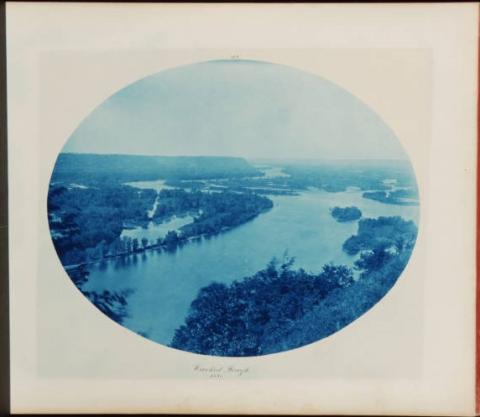
Discussion Questions & Activities
- Choose an image from the set to analyze. First, study the image and describe the people, objects, environment, or activities you see. Based on the details you observed, explain what you think is going on, what might happen next, or why the photographer took this picture. What questions do you have about the image, and where might you find some answers?
- What are the advantages of a photography technique like cyanotypes? What are the disadvantages?
- Why do you think an engineer like Henry Bosse used the cyanotype technique to take photographs of the Mississippi River?
- Looking at the images Henry Bosse took of the Mississippi River, what can you learn about life on the river in the late 19th century?
- The National Museums of Liverpool produced the video "Cyanotype Prints for Beginners." Watch the video and assemble the supplies you will need to make your own cyanotypes images. Follow the instructions to create your own images. Did it work?
eLibrary Minnesota Resources (for Minnesota residents)
"Anna Atkins." Britannica Academic, Encyclopædia Britannica, 7 Jul. 2015. Accessed 28 Mar. 2023.
"Electromagnetic radiation." Britannica Academic, Encyclopædia Britannica, 3 Mar. 2023. Accessed 28 Mar. 2023.
"History of photography." Britannica Academic, Encyclopædia Britannica, 10 Jan. 2023. Accessed 29 Mar. 2023.
"Sir John Herschel, 1st Baronet." Britannica Academic, Encyclopædia Britannica, 20 Mar. 2012. Accessed 28 Mar. 2023.
Turner, J., et al. “From Ultraviolet to Prussian Blue: A Spectral Response for the Cyanotype Process and a Safe Educational Activity to Explain UV Exposure for All Ages.” Photochemical & Photobiological Sciences, vol. 13, no. 12, Dec. 2014, pp. 1753–64.
Additional Resources for Research
“Cyanotype.” Wikipedia, Wikimedia Foundation, 17 Mar. 2023.
“Cyanotype Prints for Beginners | National Museums Liverpool.” YouTube, 10 Dec. 2020. Accessed 28 Mar. 2023.
"Cyanotype Process (1842-today)." In "From Daguerreotype to Digital," The Historic New Orleans Collection. Accessed 29 Mar. 2023.
Kok, Jenevieve. “Brilliance in Blue - What Are Cyanotypes?” The Artling, 4 Dec. 2020. Accessed 28 Mar. 2023.
Muzdakis, Madeleine. "Cyanotype: The Photographic Process That “Blue” Everyone Away 170 Years Ago." My Modern Met, 11 Sept. 2020. Accessed 29 Mar. 2023.
“Popular Photographic Print Processes: Cyanotypes.” Prints and Photographs Reading Room, Library of Congress. Accessed 28 Mar. 2023.
Wehrenberg, Charles, and Henry Bosse. Mississippi Blue: Henry P. Bosse and His Views on the Mississippi River between Minneapolis and St. Louis, 1883-1891. Solo Zone, 2001.
Published onLast Updated on
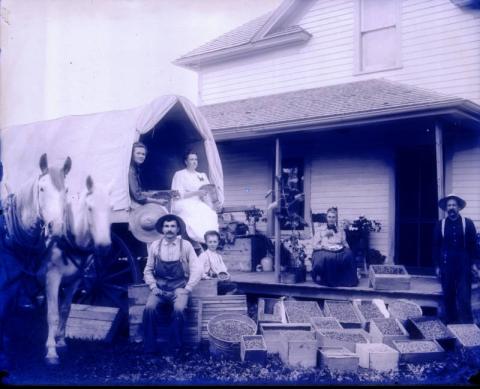
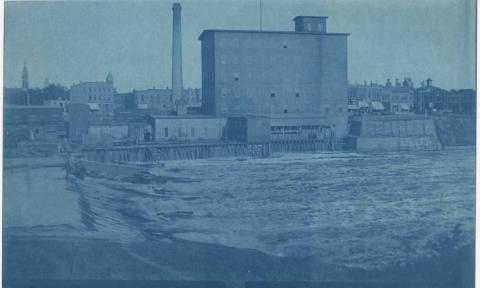
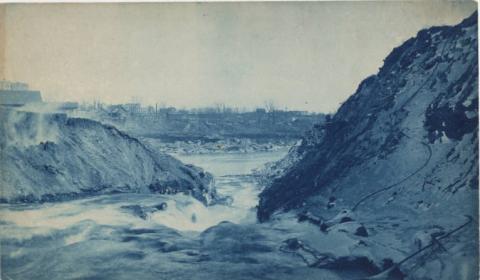
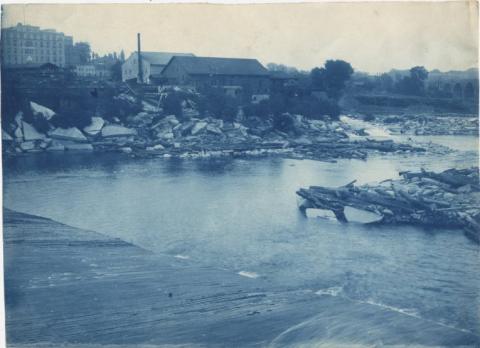
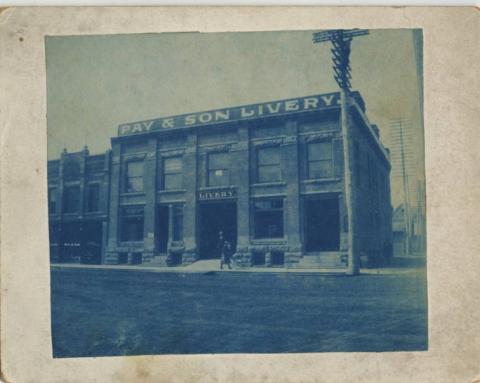
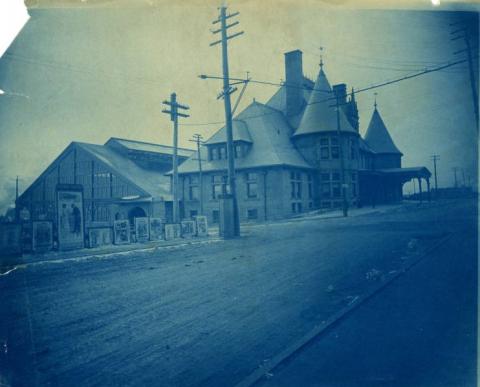
![From bluffs at Fountain City, Wis. [Wisconsin], Looking up stream, 1885](/sites/default/files/styles/large/public/2023-03/FromBluffsFountainCity.jpg?itok=K9J1hgyX)
![Illinois Central Railroad Bridge and Wagon Bridge at Dubuque, Ia. [Iowa], 1891](/sites/default/files/styles/large/public/2023-03/IllinoisCentralRailroadBridge.jpg?itok=oSPpE-n4)
![Smith Avenue Bridge, St. Paul, Minn. [Minnesota], 1889](/sites/default/files/styles/large/public/2023-03/HighBridgeSmithAve.jpg?itok=It2UJIpP)
![From wagon road at S. [South] St. Paul, looking down stream, L. W. [Low water], 1890](/sites/default/files/styles/large/public/2023-03/FromWagonRoad.jpg?itok=6U_MX_6F)
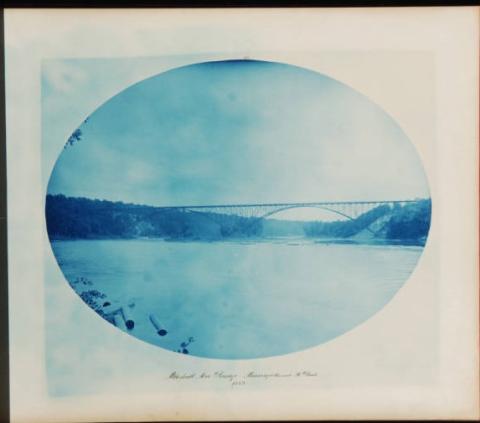
![Below the Falls of St. Anthony, Minneapolis, Minn. [Minnesota], 1885](/sites/default/files/styles/large/public/2023-03/BelowFallsStAnthony.jpg?itok=YwENtWzu)
![Bar in front of La Crosse, Wis. [Wisconsin], 1891](/sites/default/files/styles/large/public/2023-03/BarLaCrossWis.jpg?itok=iDQYA_6P)
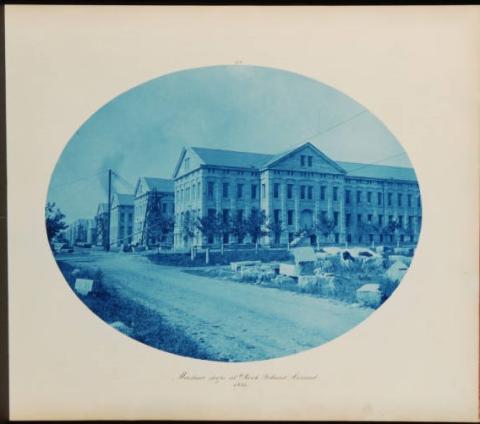
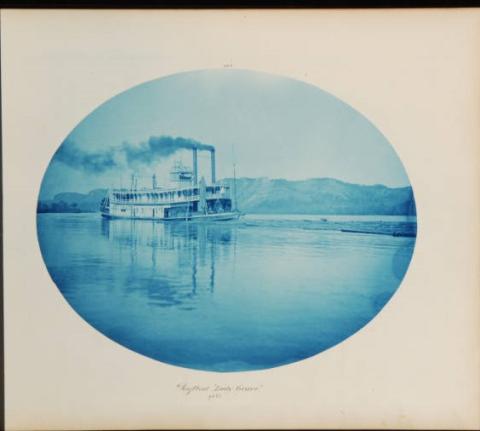
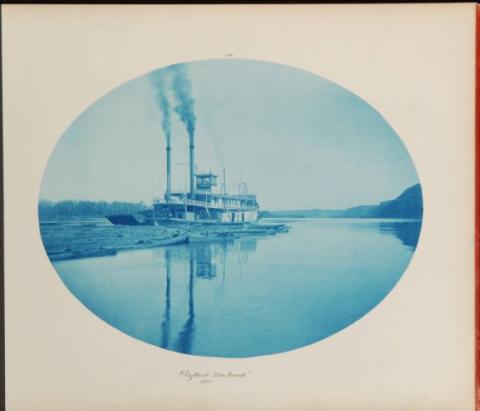
![U.S. Snagboat "General Barnard" [John Gross Barnard], 1885](/sites/default/files/styles/large/public/2023-03/USsnagboatGeneralBarnard.jpg?itok=2o0Bf2aX)